
Tonight, i could see the northern lights from my house 50 miles nw of Cincinnati
Thanks, cutworm!
I know from many of your past posts that you are an astronomy buff, night sky watcher!
That's exactly what my daughter in law said earlier!
I was thinking from this map that it might not be this far south. If you view it thru your cell phone camera its many times more impressive.

When Deb and I went to Alaska in August 1991, we got extremely lucky because of it being a peak in the solar cycle.
I had no idea where we were in the 11 year cycle but woke up in the middle of the very short nights every night to go outside to view the sky.
No luck the first 9 nights. Then on our last night, while staying in the Danali State Park............WOW!!!!
Not just close to the horizon but most of the sky. It was surreal!
The solar cycle 22 lasted from September 1986 to August 1996. The cycle has started with a minimum of 13.5 (monthly average) and reached a maximum of 212.5 (monthly average) in October 1989. The cycle has taken 118 months (9.9 years). The solar activity increased over a period of 38 months (3.2 yers) and declines during the following 81 months (6.8 years).
https://weather.plus/solar-cycle-22.html
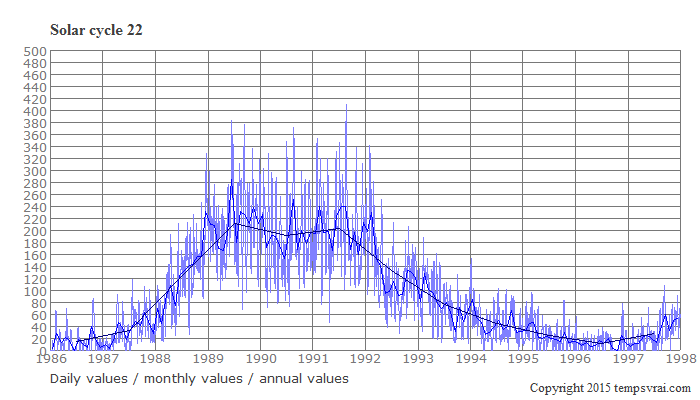
Previous thread with lots of good links and stories related to this topic!
Northern lights this weekend
31 responses |
Started by cutworm - May 10, 2024, 8:10 a.m.
this is the first time I have seen the lights!!!
Thanks, cutworm!
It only took XX number of years
Actually, until the last XX number of years and the internet, almost nobody would have been tipped off, like we were last night. As a meteorologist, I might have had an edge by following the solar cycle and knowing the favorable times frames but with actual events, I get the same information on the internet as everybody else. This is one of the many examples of the wonderfully positive use/application of information at our fingertips!!
I have a sister that lives in Alaska that takes these events for granted. Another one in ND sent us lots of images via cell phone that were pretty awesome.
What we had in Southern Indiana last night was unique/special to us but for Alaska would not have been worth going outside to barely see!
https://www.usatoday.com/story/news/nation/2025/11/12/northern-lights-photos-last-night/87227407007/
+++++++++++++++
https://www.cbsnews.com/news/northern-lights-us-geomagnetic-storm-photos/
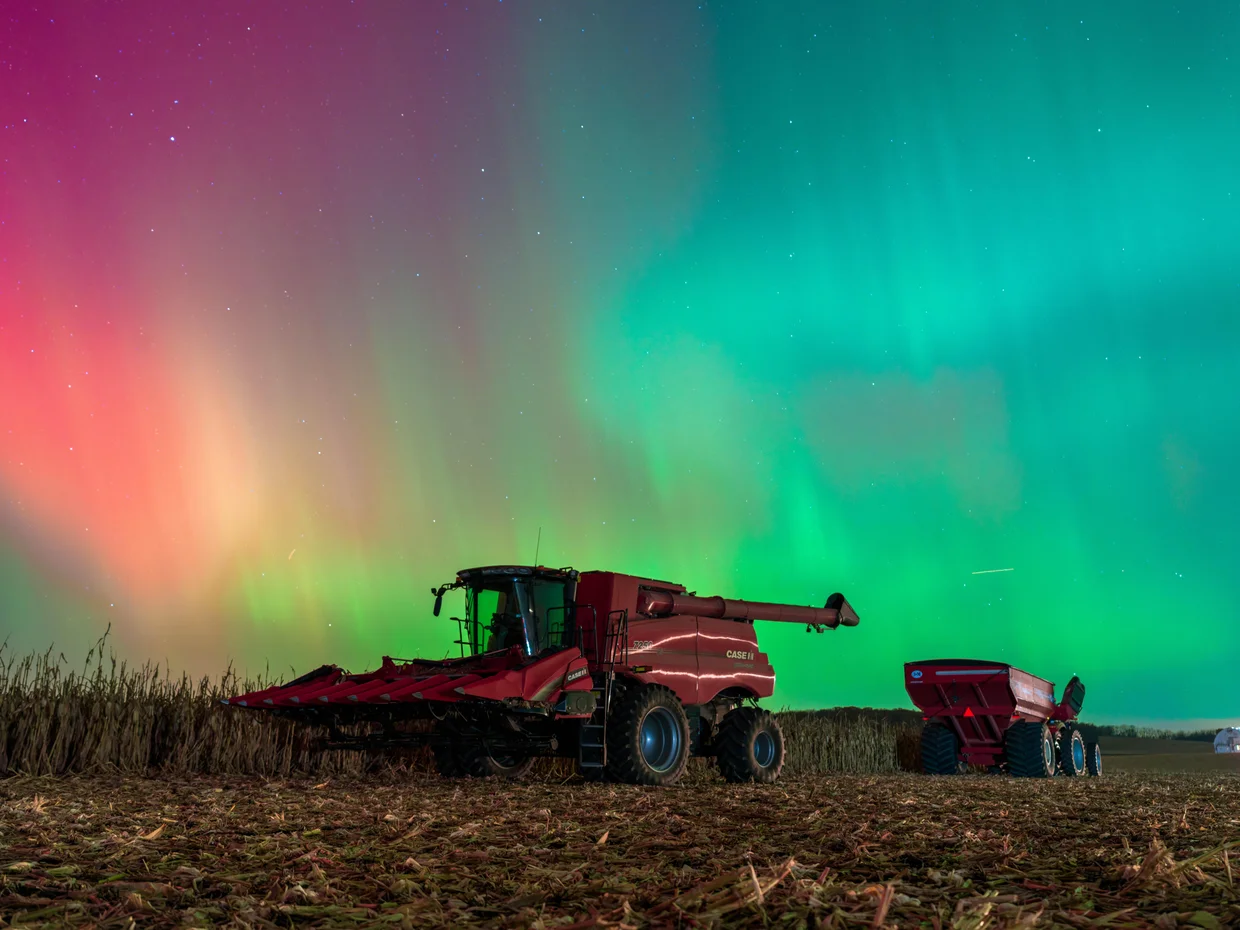
The aurora borealis lights up the night sky over Monroe, Wisconsin, on Nov. 11, 2025, during one of the strongest solar storms in decades. The geomagnetic event pushes the northern lights deep into the continental United States, with vibrant pink, red, and green hues illuminating rural farmsteads and open fields across the Midwest.
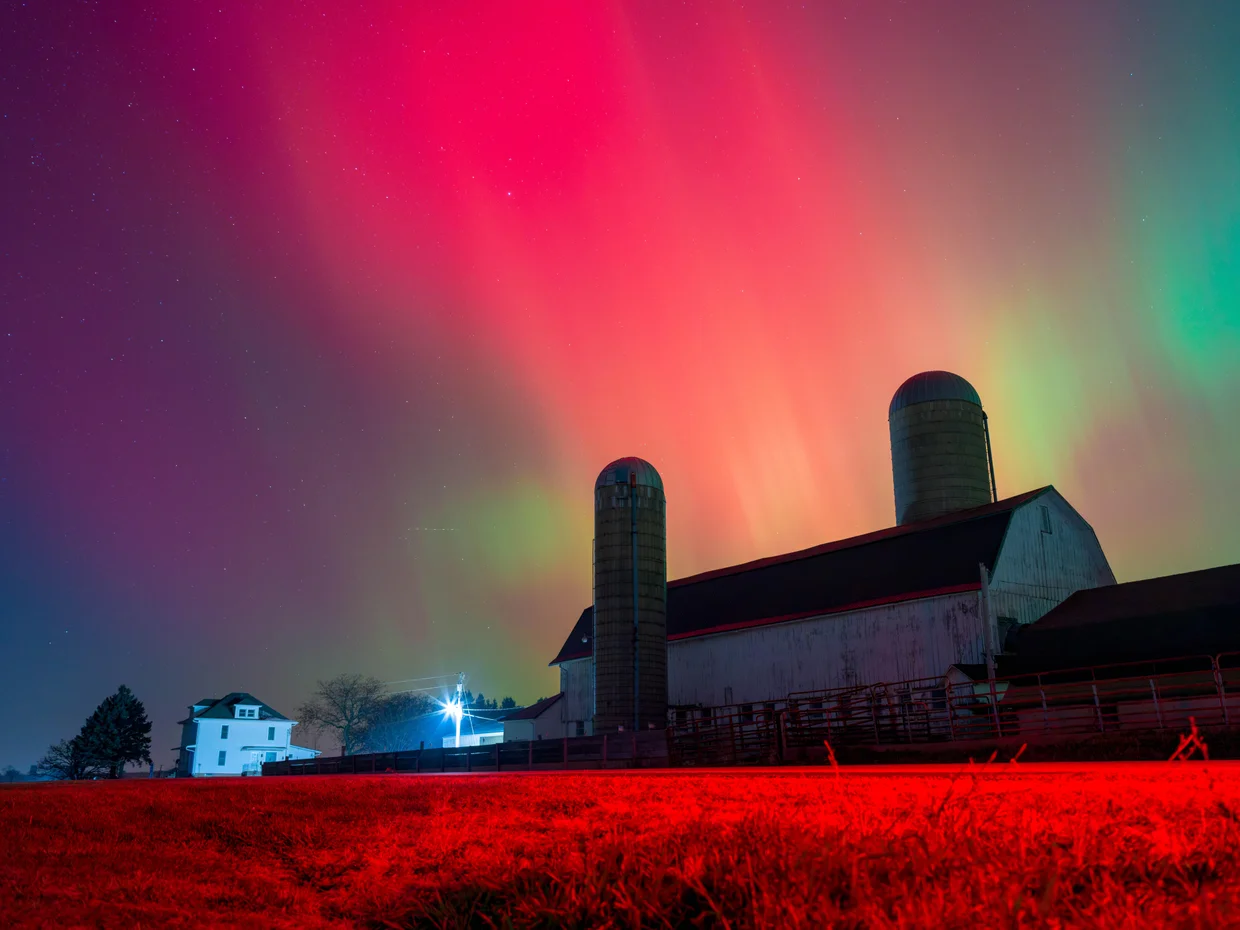
This Aurora forecast last night was very misleading on how far south to view the Aurora:

++++++++++++
In retrospect, the K Index seems to be the better metric with the brief but huge spike up last evening.
It's in GMT which is 6 hours ahead of CST. So the reds below are at 9pm, then Midnight CST.
https://www.swpc.noaa.gov/#slideshow-3
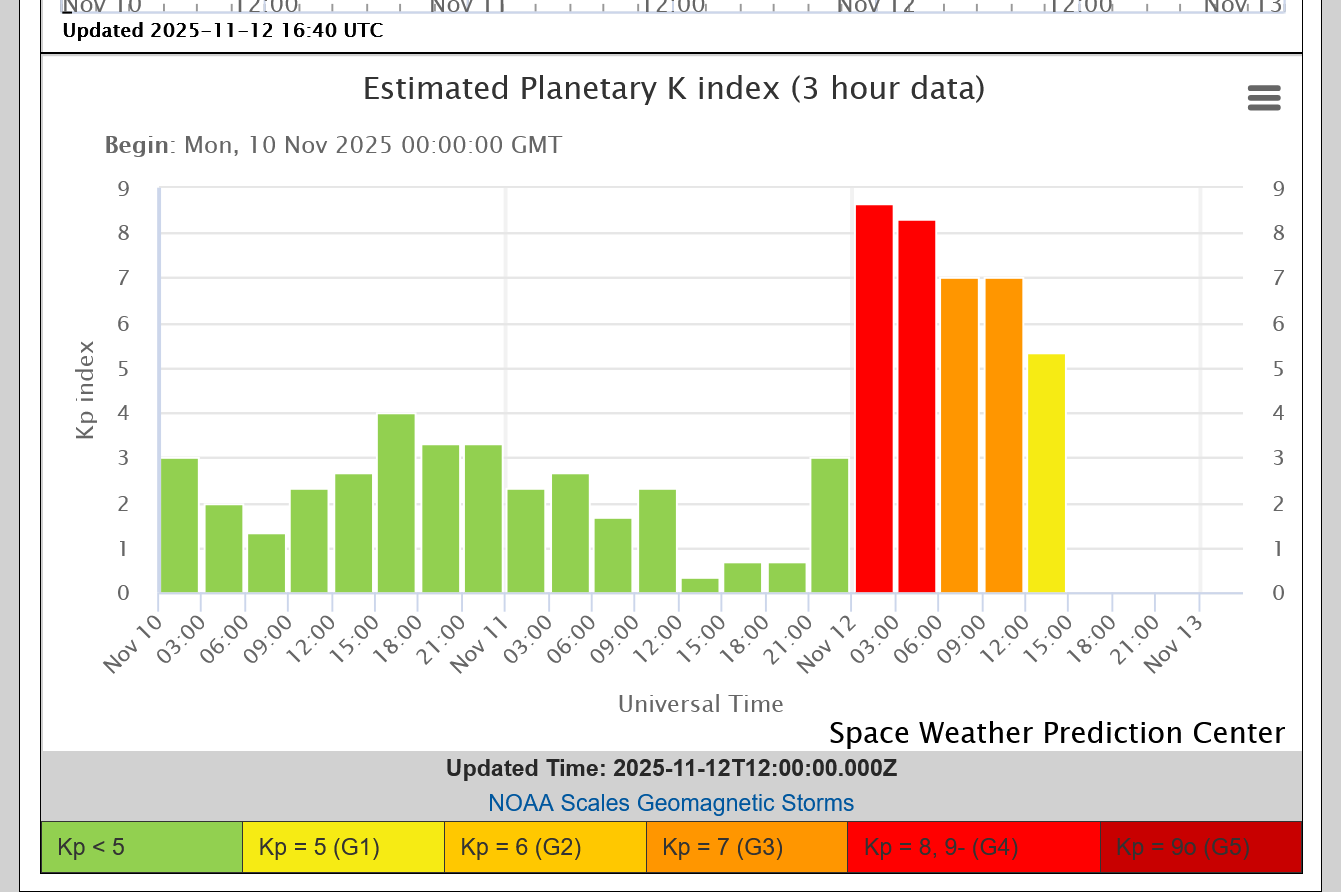
The aurora tonight does not appear to be as strong as last night. We can see the very brief spike up on Tuesday in reds that was timed perfectly to the dark evening hours in North America!
1. Skies were dark
2. In the evening, people were still up. The first red was 9pm CST. Send one was midnight CST.
https://www.swpc.noaa.gov/products/aurora-30-minute-forecast
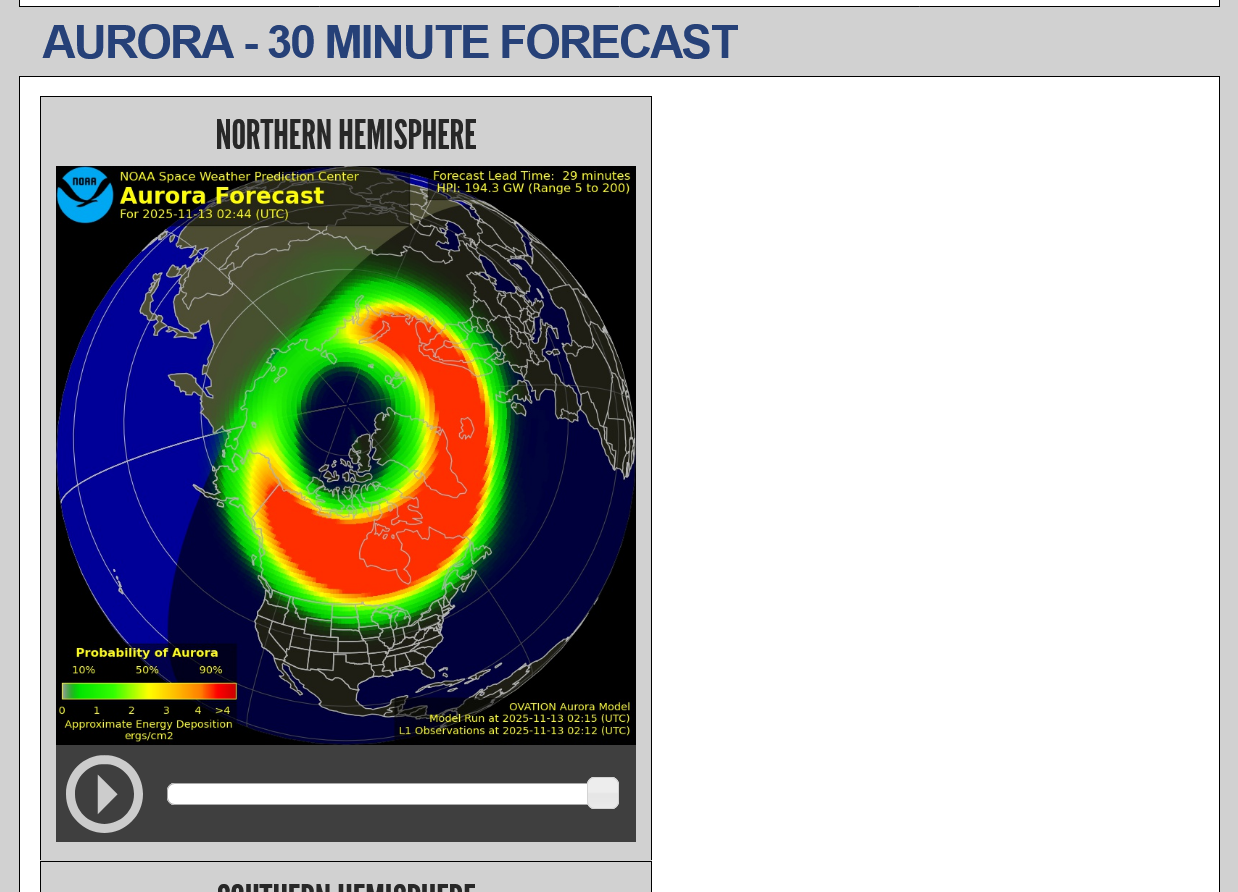
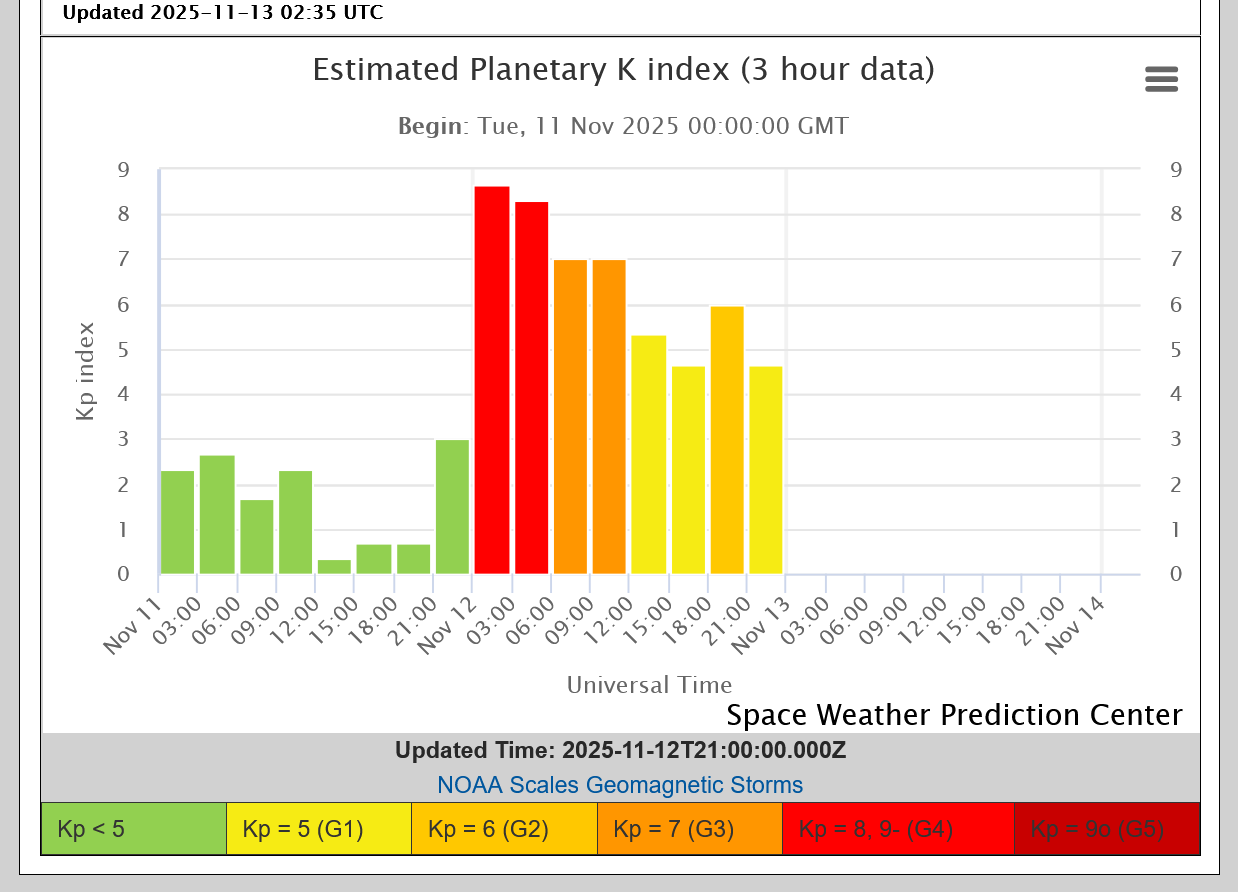
++++++++++++++
9pm: The K Index just bumped higher!

https://en.wikipedia.org/wiki/Aurora

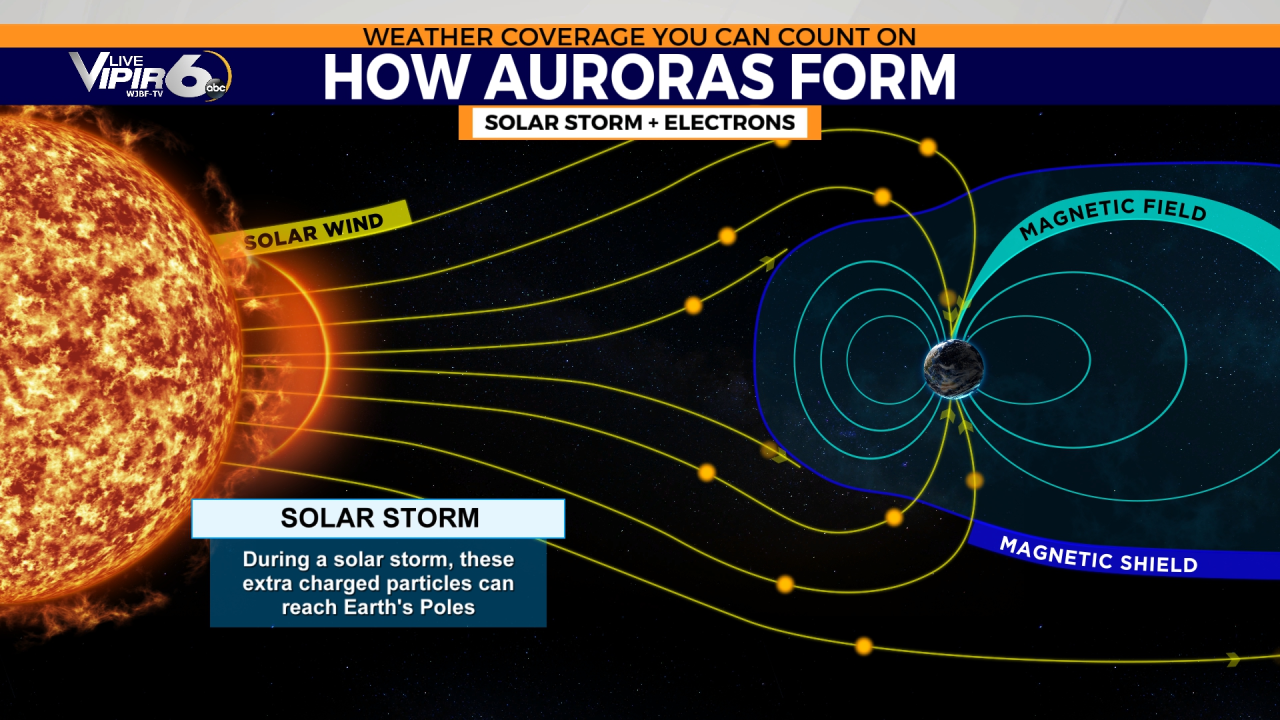
The event is over, after a bit of a bounce yesterday evening.
We can know about the actual events after eruptions on the sun that cause perturbations in the solar wind with extremely high confidence. However, the intensity of the charged particles is very uncertain until those perturbations reach instrument high above the earths atmosphere that measure them.
https://www.swpc.noaa.gov/#slideshow-3


Aurora Tutorial